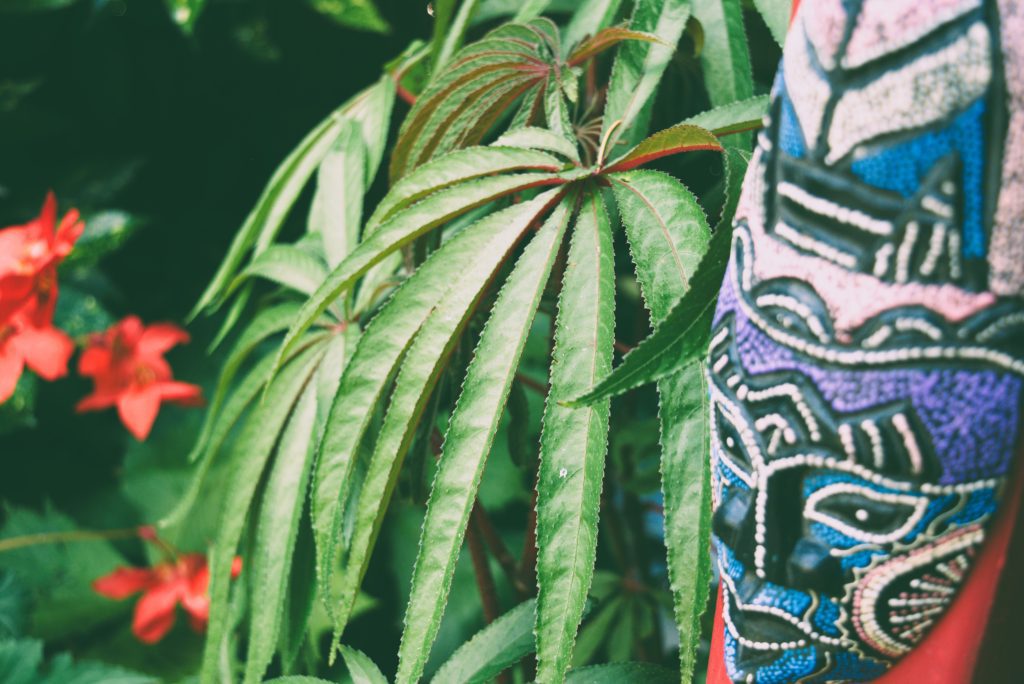Begonia luxurians, commonly known as Palm Leaf Begonia, is a stunning plant that hails from the tropical regions of Brazil. Known for its striking, palm-like leaves and graceful, arching stems, this begonia adds an exotic touch to any garden. In the UK, where tropical style gardens are increasingly popular, Begonia luxurians has found a niche among gardening enthusiasts seeking to create lush, verdant landscapes.
History
Begonia luxurians was first described in the 19th century and has since become a beloved species among begonia collectors and tropical plant enthusiasts. Its unique appearance, reminiscent of palm fronds, makes it a standout in any plant collection. While begonias, in general, have a long history of cultivation, Begonia luxurians has gained particular attention for its architectural foliage and ease of growth in suitable conditions.
Propagation
Propagating Begonia luxurians can be done through stem cuttings or seed, though stem cuttings are the most common and reliable method. To propagate this plant through cuttings:
- Select a Healthy Stem: Choose a non-flowering stem that is healthy and vigorous.
- Cut the Stem: Using a clean, sharp knife or scissors, cut a 4-6 inch section of the stem, just below a node.
- Prepare the Cutting: Remove the lower leaves, leaving a few at the top.
- Plant the Cutting: Insert the cutting into a pot filled with a mix of peat and perlite or a well-draining potting mix. Water lightly.
- Provide Humidity: Cover the pot with a plastic bag or place it in a propagator to maintain high humidity.
- Wait for Rooting: Place the pot in a warm, bright location but out of direct sunlight. Roots should develop in a few weeks.

Uses in a UK Tropical Style Garden
In the UK, Begonia luxurians can be used to create an exotic, tropical ambiance in gardens. Its large, palmate leaves provide a dramatic contrast to more traditional plants. Here are some ideas for incorporating Begonia luxurians into a tropical style garden:
- Focal Point: Plant it as a centerpiece in a garden bed or large container where its unique foliage can be admired.
- Underplanting: Use it as an underplanting for taller, tropical plants like bananas (Musa spp.) or tree ferns (Dicksonia antarctica).
- Mixed Borders: Combine it with other shade-loving tropical plants like hostas, ferns, and coleus for a lush, layered effect.
- Container Gardens: Grow it in containers that can be moved indoors during colder months to protect it from frost.
Overwintering
Begonia luxurians is not frost-hardy and requires protection during the UK’s colder months.
It is essential to bring Begonia luxurians indoors before the first frost.
For plants grown in containers:
- Move Indoors: Place the plant in a bright, indirect light location. A conservatory or a bright windowsill is ideal.
- Reduce Watering: During winter, reduce watering but do not allow the soil to dry out completely. Overwatering can lead to root rot.
- Maintain Humidity: The plant will appreciate higher humidity levels. Consider using a humidifier or placing the pot on a tray of pebbles with water.
Problems and Aftercare
Begonia luxurians is generally robust, but it can face a few issues:
- Pests: Watch for common pests like aphids, spider mites, and mealybugs. Treat infestations with insecticidal soap or neem oil.
- Diseases: Root rot can occur if the plant is overwatered. Ensure well-draining soil and avoid waterlogged conditions.
- Leaf Drop: Sudden changes in temperature or humidity can cause leaf drop. Maintain a stable environment, especially during winter.
- Leggy Growth: Insufficient light can lead to leggy growth. Ensure the plant receives bright, indirect light.
Regular maintenance ensures Begonia luxurians remains healthy and vibrant:
- Pruning: Prune back leggy stems to encourage bushier growth. Remove any dead or damaged leaves.
- Feeding: During the growing season, feed with a balanced, water-soluble fertilizer every 4-6 weeks.
- Repotting: Repot the plant every 2-3 years or when it becomes root-bound, using fresh potting mix.
Conclusion
Begonia luxurians is a versatile and striking addition to any UK tropical style garden. With its lush, palm-like foliage, it creates an exotic atmosphere and pairs well with a variety of tropical plants. Proper propagation, overwintering, and care will ensure this beautiful plant thrives, providing a touch of the tropics year-round.
